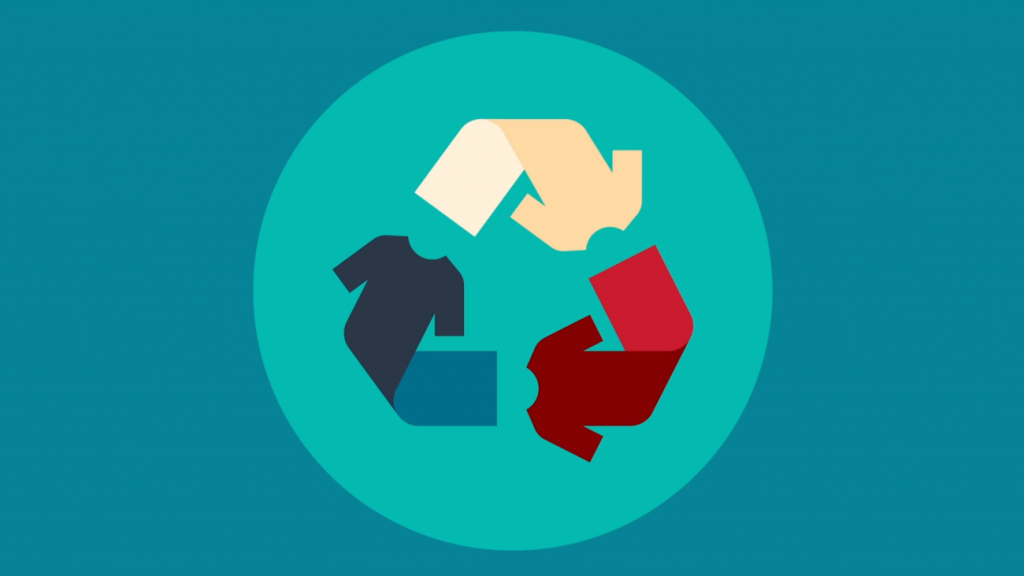By Tom Secheyron

Consumerism and its toxic culture of buying clothes until they don’t fit in one’s closet have pushed many brands to the end of mass production, creating a negative loop of constant supply and demand that is ultimately detrimental to our environment. Luckily, some brands have risen above this phenomenon and implemented circular fashion policies to attract environmentally-minded customers and keep their environmental impact low. But what exactly is circular fashion? How has it gained so much momentum in such a short period, and which brands are leading this revolution?
Circular Fashion
Circular fashion involves turning old clothes into new ones by focusing on a closed loop. Companies must take back the products they have sold once they are outgrown or outworn by their customers and either recycle, refurbish, or reuse them into new products. Our current consumption model, within the fashion industry, amongst others, is based on an open loop: producers sell their products to consumers, which use them for a certain period before these various clothes or accessories most likely end up in a landfill. A circular company attempts circularity and works to keep its products out of landfills, taking responsibility for its items throughout their whole lifecycle. The more companies can do this, the closer we get to a circular fashion economy, the ultimate goal of circularity and circular fashion.
OnRunning’s Cyclon Shoe
OnRunning is a Swiss running brand that makes running apparel, most notably, running shoes that follow the circular fashion model. In late 2020, they released a 100% recyclable shoe made from materials such as castor beans without using dyes to colour the shoe’s upper part, meaning it only comes in an entirely white model. While this is already a step in the right direction, it is not the only environmental initiative the brand wanted to address with its product: The Zurich-based company was determined to tap into the circular fashion market. To do so, the Cyclon Shoe is a subscription service: runners sign up and pay approximately 40 CAD per month to benefit from a new pair when their current pair wears out. Due to the shoe’s fully recyclable nature, it is a zero-waste product and returned Cyclon shoes can thus be broken down and turned into raw materials for new products. As a sports performance brand, they could not sacrifice quality and still ensured that the shoe provides optimum performance for 400 kilometres of running. With the added commitment of replacing the shoe twice a year, a well-trained runner can rely on the shoe year-round. This type of subscription-based product is the essence of circular fashion: it embodies the never-ending loops of recycling and reusing that are central to the circular fashion movement. The challenge for these products is to ensure that they provide a satisfactory customer experience, which OnRunning has endeavoured to achieve with Cyclon.
Freitag: Turning Truck Tarps into Bags
Also following the circular fashion road, Swiss bag brand Freitag is operating using a revolutionary system that embeds circularity in their products and supply chain, re-utilizing truck tarps to make their signature bags. The tarpaulins are collected from trucks around Europe, and the company relies on approximately 350 tons of tarps annually to meet its demand. To guarantee the safety of the eventual bags, the truck tarps are tested before being cut up, washed, designed as bags, and finally distributed for sale worldwide. Freitag prioritizes short transport routes to keep its carbon footprint as low as possible. This is yet another example of a company taking the lead on the circularity challenge and pushing themselves to innovate their operations to benefit the planet. Freitag is cementing their product as planet-friendly through this commitment and is showing the way for other companies attempting to adopt circularity and include it within their production chains.
Circular Fashion: Just a Trend or a Long-Term Solution?
Circularity’s potential for re-inventing our consumption processes as a society is undeniable, but issues still arise. The current limits on this model are two-fold. Firstly, it requires innovative brands with access to valuable partners backed by a robust, sustainable financial model that has been working for years. Unsurprisingly, the two examples of OnRunning and Freitag are Swiss-based companies, one of the most innovative countries in the world, in which supply chains are being re-invented at a faster pace than in nearly every other state. Unfortunately, these products are also not distributed to many people: they are limited to wealthy customers who live in developed countries and have the financial capacity to think about their products’ production processes. As encouraging as circularity might be, its applicability is now too limited and will not reach the masses living in developing regions, such as Africa or Latin America. Yet, the development and momentum that circular fashion has garnered are encouraging. Its potential growth is a positive sign for global value chains and our planet. Individual initiatives supporting brands such as OnRunning and Freitag can help ensure that circular fashion is not just a trend but a long-term staple of our consumption habits.
